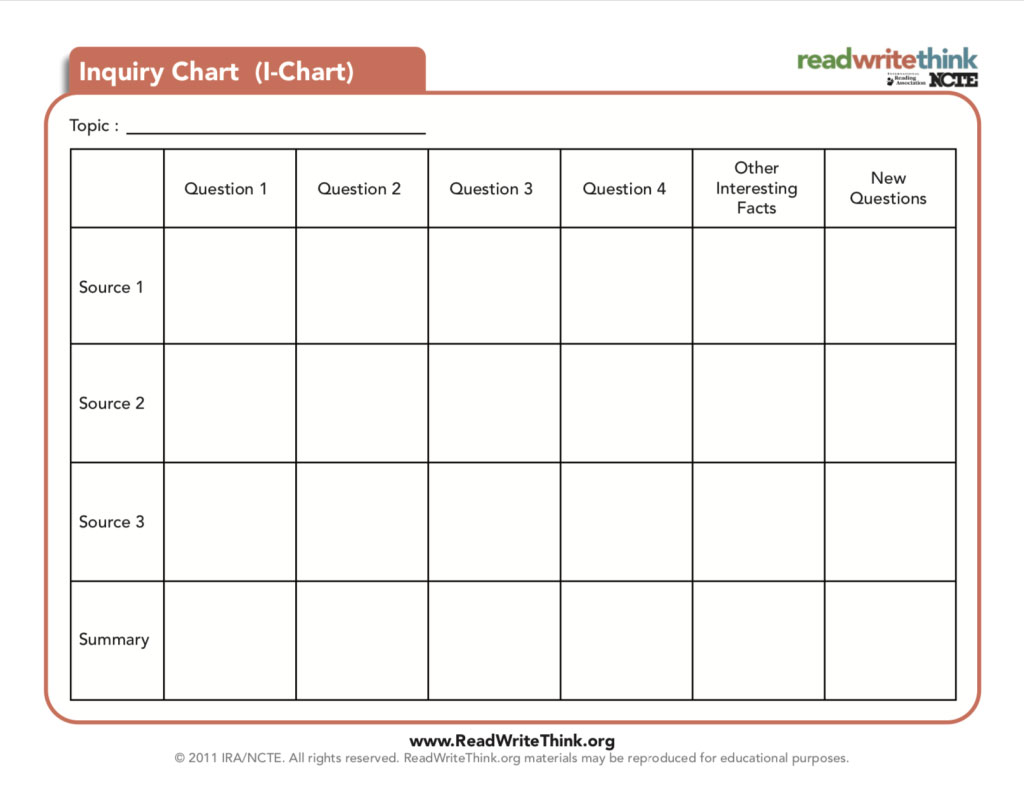Key Information
Focus
When To Use This Strategy
Appropriate Group Size
Why use an inquiry chart?
- It fosters critical thinking and strengthens reading skills.
- It teaches younger students to generate meaningful questions about a topic and learn to organize their writing.
- Students build upon prior knowledge or thoughts about the topic by sharing interesting facts.
- It can serve as an evaluation tool for how much a student has learned about a topic.
How to use an inquiry chart
- The teacher provides each student with a blank I-chart and assists with topic selection OR provides the pre-selected topic.
- The students engage in forming questions about the topic. Those questions are placed at the top of each individual column.
- The rows are for recording any information students already know and the key ideas pulled from several different sources of information. The last row gives students the opportunity to pull together the ideas into a general summary.
- Teachers may ask students to resolve competing ideas found in the separate sources or develop new questions to explore based on any conflicting or incomplete information.
The planning phase includes:
- identifying the topic
- forming questions
- constructing the I-chart
- collecting materials
The next step is to engage students in the interacting phase which involves:
- exploring prior knowledge
- sharing of interesting facts
- reading and rereading
Finally, teachers guide the students through the integrating and evaluation phase by:
- summarizing
- comparing
- researching
- reporting
Download blank templates
Collect resources
Sample I-chart

Science
The example below is an inquiry chart that students could use to reveal what they learn about simple machines. See example ›
Differentiated instruction
For second language learners, students of varying reading skill, and younger learners
- Teachers should be sure that the questions are kept simple for younger students.
- For advanced learners:
- Add another row to the I-chart called Summary. Have students summarize each of the columns.
- Use their information to create a product (e.g., research paper, brochure, or PowerPoint presentation).
- Use the I-Chart in other classes that require research.
See the research that supports this strategy
Hoffman, J. (1992). Critical reading/thinking across the curriculum: Using I-charts to support learning. Language Arts, 69(2), p. 121-27.
Jones, R. (2006). Strategies for Reading Comprehension: Inquiry Chart.
FOR-PD. (2006). FOR-PD’s Reading Strategy of the Month.
Children’s books to use with this strategy

Lincoln and His Boys

Mr. Lincoln’s Boys

